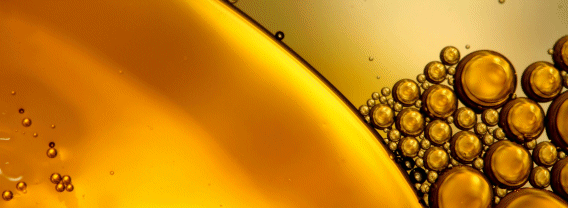Chemical and Process Engineering Resources

Liquid-Liquid extractors are often a neglected part of process plants because they are not well understood and generally form only a small part of the overall process scheme. Often, significant savings in operating costs can be achieved by fine-tuning extraction systems. This article describes important parameters that should be considered when optimizing extraction systems.
Liquid-Liquid extraction is a mass transfer operation in which a liquid solution (the feed) is contacted with an immiscible or nearly immiscible liquid (solvent) that exhibits preferential affinity or selectivity towards one or more of the components in the feed. Two streams result from this contact: the extract, which is the solvent rich solution containing the desired extracted solute, and the raffinate, the residual feed solution containing little solute.The following need to be carefully evaluated when optimizing the design and operation of the extraction processes.
- Solvent selection
- Operating Conditions
- Mode of Operation
- Extractor Type
- Design Criteria
Solvent Selection
Solvents differ in their extraction capabilities depending on their own and the solute's chemical structure. Robbins (1) presents a table showing Organic-Group interactions from which one can identify the desired functional group(s) in the solvent for any given solute.
Once the functional group is identified, possible solvents can be screened in the laboratory. The distribution coefficient and selectivity are the most important parameters that govern solvent selection. The distribution coefficient (m) or partition coefficient for a component (A) is defined as the ratio of concentration of a A in extract phase to that in raffinate phase. Selectivity can be defined as the ability of the solvent to pick up the desired component in the feed as compared to other components. The desired properties of solvents are a high distribution coefficient, good selectivity towards solute and little or no miscibility with feed solution. Also, the solvent should be easily recoverable for recycle. Designing an extractor is usually a fine balance between capital and operating costs. Usually, good solvents also exhibit some miscibility with feed solution (see Table 1). Consequently, while extracting larger quantities of solute, the solvent could also extract significant amount of feed solution.
| Solvent | DistributionCoefficient @ 20 °C | Miscibility with Waterwt% @ 20 °C |
| n-Butanol | 1.6 | >10 |
| Ethyl Acetate | 0.9 | 10 |
| MIBK | 0.7 | 2.0 |
| Toluene | 0.06 | 0.05 |
| n-Hexane | 0.01 | 0.015 |
Other factors affecting solvent selection are boiling point, density, interfacial tension, viscosity, corrosiveness, flammability, toxicity, stability, compatibility with product, availability and cost.
For an existing process, replacing the solvent is usually a last resort because this this would call for going back to laboratory screening of the solvent and process optimization. However, changes in environmental regulations and economic considerations often induce the need to improve the processes in terms of solute recovery. Also the availability of specialized and proprietary solvents that score over conventional solvents in terms of performance and economics for several extraction processes can provide additional incentives for a solvent change.
Selection of Extraction Conditions
Depending on the nature of the extraction process, the temperature, pH and residence time could have an effect on the yield and selectivity. Operating pressure has a negligible affect on extraction performance and therefore most extractions take place at atmospheric pressure unless governed by vapor pressure considerations.
Temperature can also be used as a variable to alter selectivity. Elevated temperatures are sometimes used in order to keep viscosity low and thereby minimizing mass-transfer resistance. Other parameters to be considered are selectivity, mutual solubility, precipitation of solids and vapor pressure.
The pH becomes significant in metal and bio-extractions. In bio-extractions (e.g., Penicillin) and some agrochemicals (e.g. Orthene), pH is maintained to improve distribution coefficient and minimize degradation of product. In metal extractions, kinetic considerations govern the pH. In dissociation-based extraction of organic molecules, pH can play a significant role (e.g., cresols separation). Sometimes, the solvent itself may participate in undesirable reactions under certain pH conditions (e.g., ethyl acetate may undergo hydrolysis in presence of mineral acids to acetic acid and ethanol).
Residence time is an important parameter in reactive extraction processes (e.g., metals separations, formaldehyde extraction from aqueous streams) and in processes involving short-life components (e.g., antibiotics & vitamins)

 FB
FB


1 Comments
good sharing, mr madhavan!